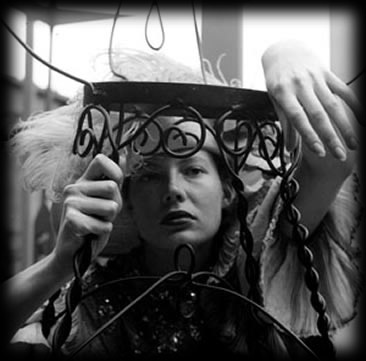San Francisco's Wild History Groove
– Overview
Swinging in the Shadows (Part Two)
Wally Hedrick at California School of Fine Arts
(Now the San Francisco Art Institute)
Wally Hedrick left Southern California and his hot-rodding days to come to San Francisco to be an artist. Two friends came up north with him, riding in his souped-up Model A. They started taking classes at the California School of Fine Arts (now the San Francisco Art Institute). He and his artist friends soon became part of the vital underground art scene, hanging out and showing their work in The Place and other bars in North Beach.
One of these friends was artist, Deborah Remington; who, along with Wally and four others, started the 6 Gallery. No one was interested in showing their work so they opened up their own cooperative gallery. The poet, Jack Spicer was one of the original members and brought in other poets. The art shows became events with poetry and performance in addition to the painting and sculpture shown. Eventually, it led to the famous reading of “Howl” by Allen Ginsberg one historical evening with Jack Kerouac among others on the scene.
These spaces showed an eclectic mix of interesting work but were all short-lived. One gallery that had a longer run was the Dilexi, opening in 1958 above the Jazz Workshop in North Beach. After a year in that location, the gallery moved to Union Street, down a steep hill off Fillmore, where it displayed cutting edge art. This was a more professional setting that gave the artists opportunity to gain some recognition. When anyone in the art world came to San Francisco in the 60s, the first place they would stop by was the Dilexi. As the decade progressed, the Beat Era morphed into the Hippie Era. The hippies, unlike the beats who distrusted media attention, enjoyed the spotlight. After a time, the pure spirit of “art for art’s sake” diminished and “making it” became more important. The Dilexi Gallery closed its doors by the end of the decade. The vital period ended but the aesthetics that drove it continue to inspire creative individuals today.
Deborah Remington (1950s)
Another great place during this period was the infamous “Fillmore Bldg” where many artists lived during the 50s and 60s. Wally and his wife at the time, artist, Jay DeFeo lived and worked in two of the flats. Other artists moved in and out of the other two flats. It was an incredible scene—a wonderful place to see first-rate art and to socialize. The parties were legendary. Artwork ranged from very eccentric to the sublime.
During this time another unusual gallery opened up down the street—the Batman Gallery. From its beginning the Batman was distinctive with black walls instead of the usual white-painted gallery walls. It was also a performance place in the tradition of the 6 Gallery.

